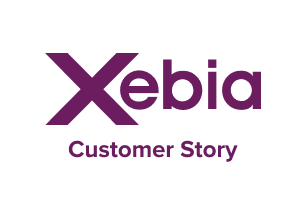Related Services
Agile Transformation
Industry
Finance
Company
Xebia
Boasting over 10,000 employees, this bank is one of Egypt's largest private-sector financial institutions. The bank offers its clients an extensive array of banking and insurance products and services, including tailored services for High-Net-worth Individuals, institutions, and corporate entities. It was also named one of the most valuable banks in the region in 2023 by Forbes. The bank has maintained its leadership as Egypt's most profitable commercial bank for more than 35 years.
Futureproofing through A New Way of Working
Agile organizations are built to support rapid and effective delivery, essential to stay competitive and keep customers satisfied. Recognizing this, this leading bank enlisted Xebia's help to transform into an Agile organization and consequently develop the infrastructure to support this transformation.
For that, they set objectives for becoming an Agile organization. These objectives include decreasing time to market, building capability for continuous improvement and innovation, reimagining culture and ways of working to support the future vision, cultivating an ownership mindset, adopting an incremental and iterative approach to deliver customer value faster, shifting to a product-centric approach, increasing agility in organizational processes, and establishing a technical and tooling ecosystem for continuous value delivery, will undoubtedly lead to a more efficient and competitive bank.
Step by Step Approach
Xebia helped the bank focus on building up its Agile capabilities from the ground up. This includes getting a clear idea of where the bank stood at the beginning of the project through thorough assessments after which several focus areas were defined. This included augmenting Agile product delivery capability by focusing on Customer Centricity, building up team and technical agility, and providing sufficient (and continuous) learning opportunities to leadership and other stakeholders for an enlightened team.
These steps would eventually lead to crafting a target operating model, building an Agile Center of Excellence, structuring an Agile Transformation framework, planning and implementing the approach, introducing a measurement framework, and more.
This approach would ensure no stones were left unturned when rolling out this new way of working.
The benefits of this approach were undeniable. More than 50% reduction in the delivery lead time for promoting significant functionality to User Acceptance Testing (UAT). The lead time effectively went down from eight months to three months over one PI. The average in-development bug fixing time was reduced by 80%, from one week to one day only, due to the introduction of self-organized and co-located teams. They also experienced an increase in shared commitment between the Scrum team, Business, and Product teams, drastically reducing handover time from one group to another.

A Systematic Plan Using the Right Tools
With a structured approach in mind, Xebia started by conducting two surveys, an Agile Maturity Assessment and a Cultural survey, to assess the bank's readiness in embracing agility. The survey results served as a starting point for next steps.
Upon evaluating the survey results, the team used the Essential Configurations of Scaled Agile Framework (SAFe 5.1) and the bank's needs to form the target operating model (TOM). The plan was to drive two pilot teams, focusing on automating customer onboarding and enhancing the customer's Asset Products Journey on their digital platforms. These teams were equipped with the TOM, clarity on roles, and expectations for the upcoming Planning Increments (PI), enabling them to commence their work. There was also a lot of focus on building knowledge through singular and routine training. The capsule training covered Agile, SAFe, Scrum, JIRA fundamentals, and Agile Estimations. Additionally, 1500 hours of non-certified knowledge-based training were delivered by experienced Xebia trainers covering Agile Basic, Scaled Agile frameworks, and DevOps training. To help build up the culture, the Agile Core Committee was formed to be the Agile Center of Excellence and reinforce the momentum of this new way of working. PI Assessment (a Xebia value add) helped the customer's leadership team to nominate members for the ACC, who worked with the Xebia team to finalize the ways of working for the ACC.
Once this was in place, the TOM implementation preparation started. During this process, the team collated information on several areas through product canvassing, customer journey mapping, and feature storming. This would help build up their confidence.
Finally, For the implementation, a half-day training on PI Planning was conducted, followed by an effective PI planning session covering program backlog preparation, PI objectives identification, team breakout sessions, ART risk identification, business value assignment, Program Board finalization, and a PI Planning Retrospective. Team-assigned scrum coaches also shadowed these sessions to maximize their knowledge. By the end of the first iteration, the teams were elated at the amount of work they could accomplish by applying simple practices as recommended by the Xebia team. Following the PI Planning session for the second planning interval, the Inspect & Adapt event allowed the teams to reflect on the past five iterations and improve their ways of working for the upcoming planning interval. Lastly, a transformation sustainability plan was also implemented. This included long and short-term goal setting, knowledge sharing, and more.


